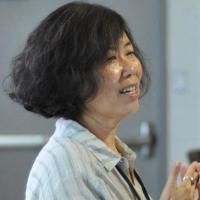Re-focusing of instruction on relative clauses [In Korean] (관형절 교수법의 재조명)
Date
2007
Authors
Journal Title
Journal ISSN
Volume Title
Repository Usage Stats
views
downloads
Abstract
This paper proposes a shift of focus in the teaching of relative clauses in Korean from a morphological approach to a processing- and function-based approach. Published instructional materials and studies of learner errors (e.g. Sung, 2002) are primarily concerned with the accuracy of the tense of adnominal markers. The first part of the paper addresses the issue of processing difficulty as a result of complex syntactic construction of relative clauses, by introducing research studies on L2 Korean guided by the Keenan and Comrie’s (1977) Noun Phrase Accessibility Hierarchy (NPAH). The studies show that a subject gap relative clause is easier to process than an object gap, which is easier in turn than an oblique gap. The second part concerns discourse/pragmatic functions of the relative clause and presents an analysis of the discourse/pragmatic functions of relatives clauses in a corpus of readers for intermediate level learners. The analysis demonstrates that a range of discourse functions are performed by the relative clause construction such as identifying of (i.e. restrictive) and elaborating on the referent (i.e. appositive) as well as establishing temporal or causal relationships between events revolving around the referent (i.e. continuative). The paper concludes with a proposal of an instructional model that addresses the processing difficulty and that raises the learner’s awareness of discourse and textual functions of the relative clause.
Type
Department
Description
Provenance
Subjects
Citation
Permalink
Collections
Scholars@Duke

Hae-Young Kim
Her research and teaching interests include bilingualism and translanguaging, second and heritage Korean language development, and content-based language instruction with focus on history, literature and cultural studies. She has published on topics such as discourse reference forms, tense/aspect morphology and relative clause construction in L2 Korean, heritage language learners and motivations, and content-driven and socially-engaging language instruction. Her current research focuses on construction of language instruction that engages in critical academic discourse while aligning with students’ cultural interests and subjectivity.
Material is made available in this collection at the direction of authors according to their understanding of their rights in that material. You may download and use these materials in any manner not prohibited by copyright or other applicable law.